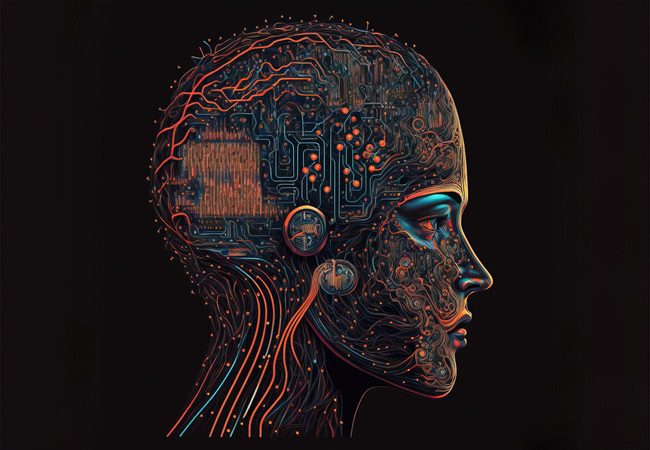Introduction:
In the dynamic landscape of Artificial Intelligence (AI), one concept that has gained significant traction is Transfer Learning. This innovative approach to AI training has been a game-changer, revolutionizing how models learn and adapt. In this article, we delve into the intricate world of Transfer Learning, unraveling its significance, applications, and the impact it has on the realm of AI training.
Understanding Transfer Learning in AI:
The Basics of Transfer Learning:
Transfer Learning is a machine learning paradigm where a pre-trained model, initially developed for a specific task, is repurposed for a new, related task. Unlike traditional machine learning methods, which start training from scratch, Transfer Learning leverages the knowledge gained from previous tasks to enhance performance on new and similar tasks.
Key Components of Transfer Learning:
Transfer Learning involves two main components – the source task and the target task. The source task is the initial task for which the model is pre-trained, while the target task is the new task to which the pre-trained model is adapted. The idea is to transfer the knowledge gained during the source task to improve the performance and efficiency of the model on the target task.
Applications of Transfer Learning in AI Training:
Image Recognition and Computer Vision:
In the realm of computer vision, Transfer Learning has proven to be immensely effective. Pre-trained models, such as those trained on massive image datasets like ImageNet, can be fine-tuned for specific tasks like object detection or facial recognition. This significantly reduces the amount of data and time required for training, making it a practical solution for real-world applications.
Natural Language Processing (NLP):
Transfer Learning has also made remarkable strides in Natural Language Processing. Models like BERT (Bidirectional Encoder Representations from Transformers) and GPT (Generative Pre-trained Transformer) have demonstrated exceptional language understanding capabilities. These pre-trained models can be adapted for various NLP tasks like sentiment analysis, text summarization, and language translation.
Medical Imaging and Healthcare:
In the healthcare sector, Transfer Learning has shown great promise in medical image analysis. Pre-trained models can be utilized to identify patterns and anomalies in medical images, aiding in the early detection of diseases such as cancer. This approach accelerates the development of AI applications in healthcare by leveraging the knowledge gained from diverse datasets.
Advantages of Transfer Learning in AI Training:
Faster Training and Reduced Resource Requirements:
One of the primary advantages of Transfer Learning is the significant reduction in training time and resource requirements. By starting with a pre-trained model, the AI system already possesses a foundational understanding of features and patterns, requiring less data and computation for fine-tuning on specific tasks.
Improved Performance with Limited Data:
Transfer Learning addresses the challenge of data scarcity in specific domains. Models can generalize better to new tasks with limited labeled data, as they inherit knowledge from the source task. This is particularly beneficial in scenarios where collecting large, diverse datasets for every new task is impractical.
Enhanced Robustness and Generalization:
Models trained using Transfer Learning often exhibit improved robustness and generalization. The knowledge gained during pre-training on diverse datasets helps the model capture a broader range of features, making it more adaptable to different tasks and reducing the risk of overfitting to specific data patterns.
Challenges and Considerations in Transfer Learning:
Domain Discrepancy:
One of the challenges in Transfer Learning is dealing with domain discrepancies between the source and target tasks. If the data distributions differ significantly, the transferred knowledge may not be as effective. Strategies like domain adaptation and fine-tuning specific layers can help mitigate this challenge.
Task Relevance:
Choosing an appropriate source task that is relevant to the target task is crucial for the success of Transfer Learning. The knowledge transferred should align with the features and patterns required for the new task. Selecting an unrelated source task may result in limited improvements or even hinder performance.
Best Practices for Effective Transfer Learning:
Selecting an Appropriate Pre-trained Model:
Choosing the right pre-trained model is a critical step in Transfer Learning. The architecture and features of the pre-trained model should align with the requirements of the target task. Understanding the nuances of different models and their strengths is essential for optimal performance.
Fine-tuning Strategically:
Fine-tuning involves adjusting the weights of the pre-trained model on the target task. Strategic fine-tuning, where specific layers are fine-tuned based on the task complexity, can enhance performance without compromising the knowledge gained during pre-training.
Data Augmentation for Improved Generalization:
Data augmentation techniques play a vital role in enhancing model generalization. By artificially expanding the training dataset through techniques like rotation, cropping, and flipping, Transfer Learning models can better adapt to variations in the target task.
Conclusion:
As AI continues to advance, Transfer Learning stands out as a pivotal technique, transforming the landscape of AI training. From accelerating model convergence to addressing data scarcity challenges, the applications and advantages of Transfer Learning are reshaping how we approach AI development. While challenges exist, strategic considerations and best practices empower developers to harness the full potential of Transfer Learning, unlocking new possibilities and ushering in a new era of intelligent applications. The journey of exploring the role of Transfer Learning in AI is not just a technological exploration; it’s a paradigm shift that paves the way for smarter, more efficient, and adaptable AI systems.



































